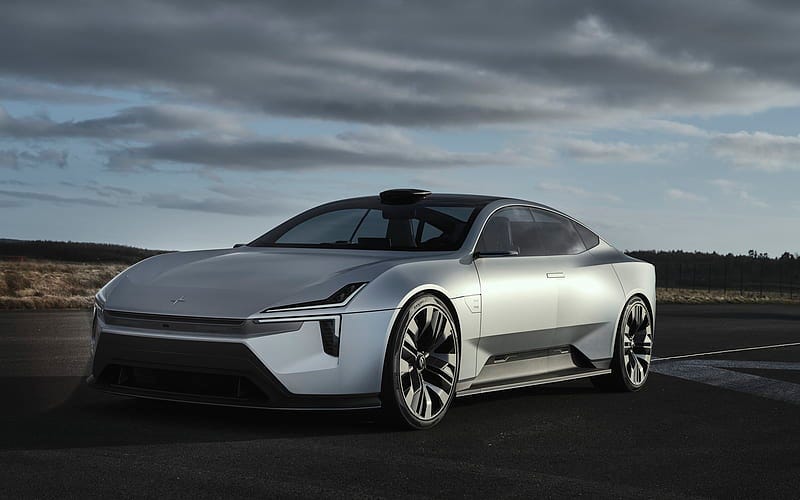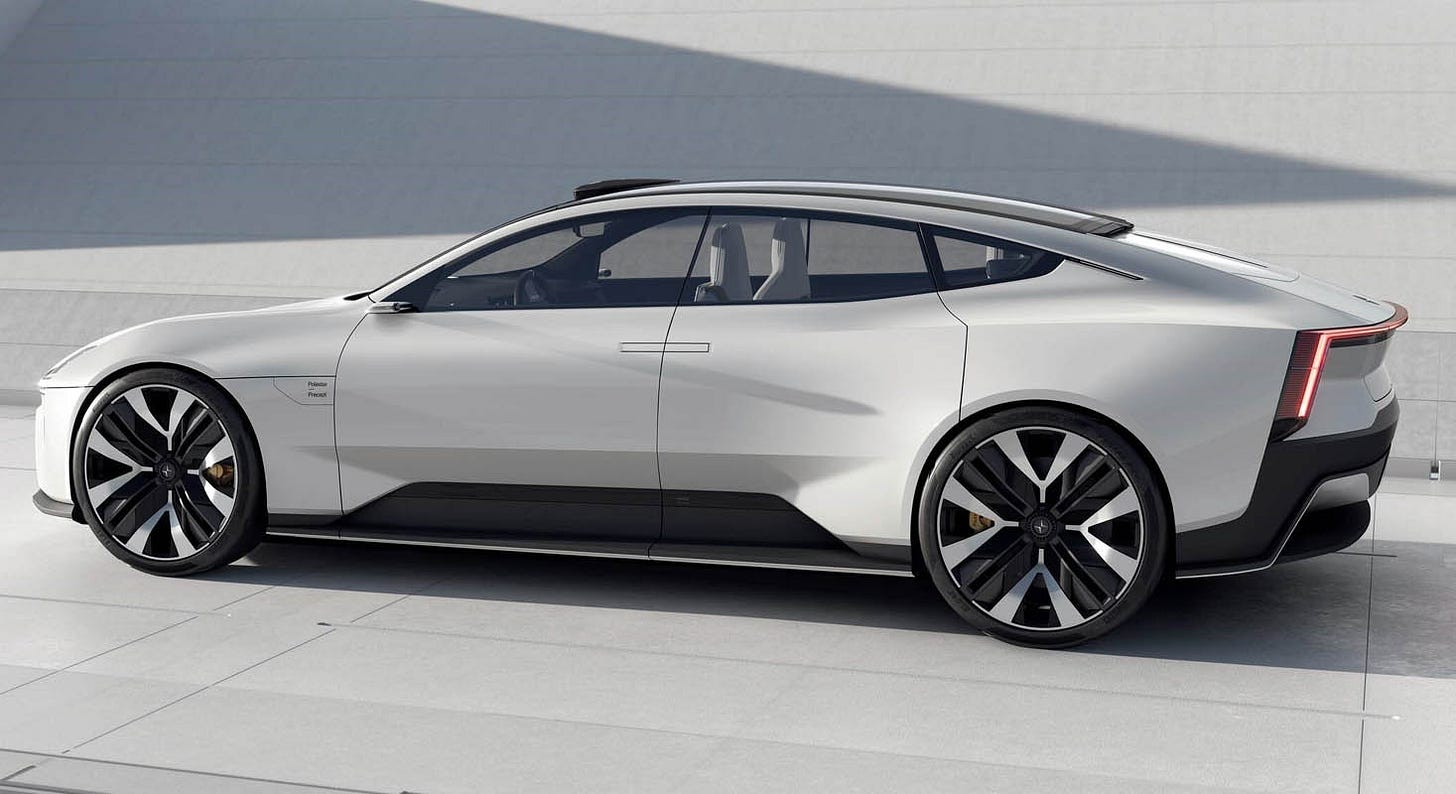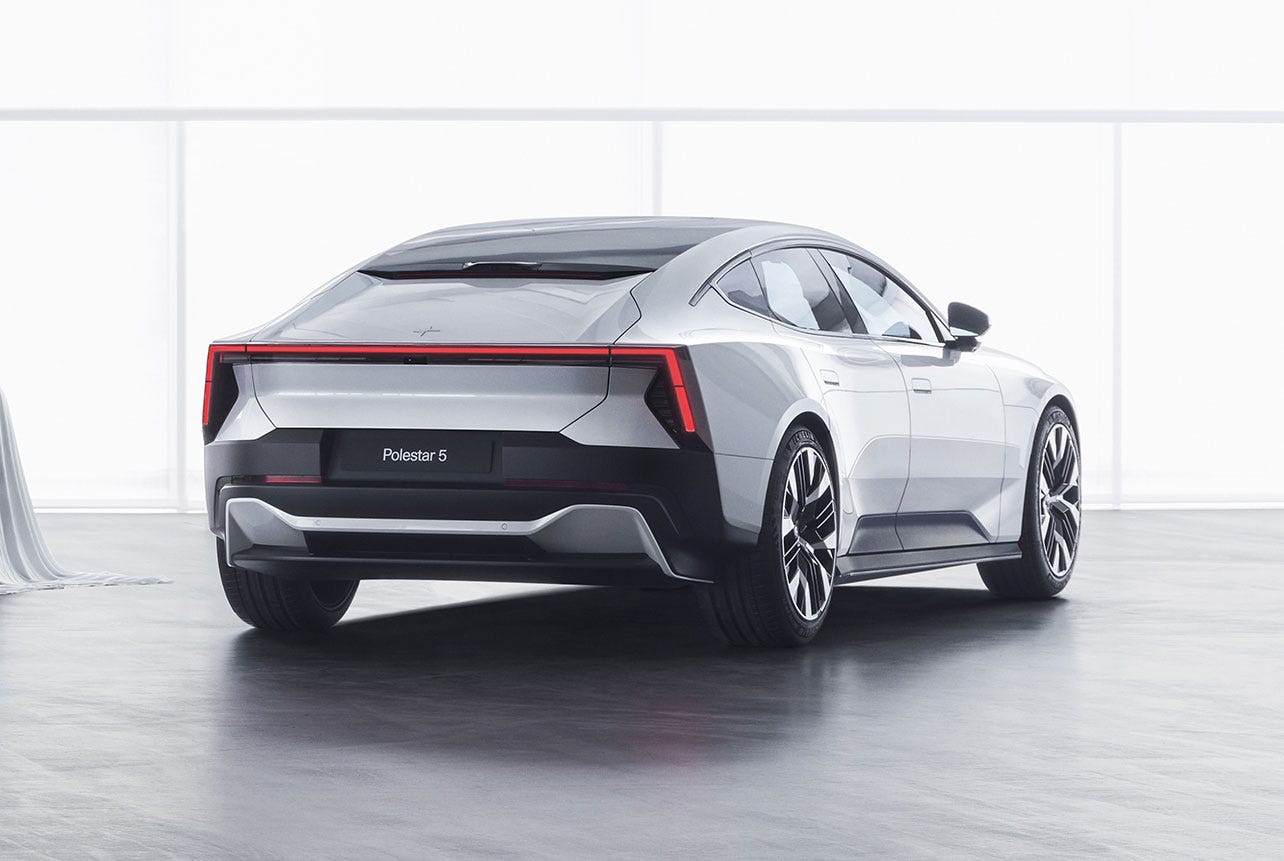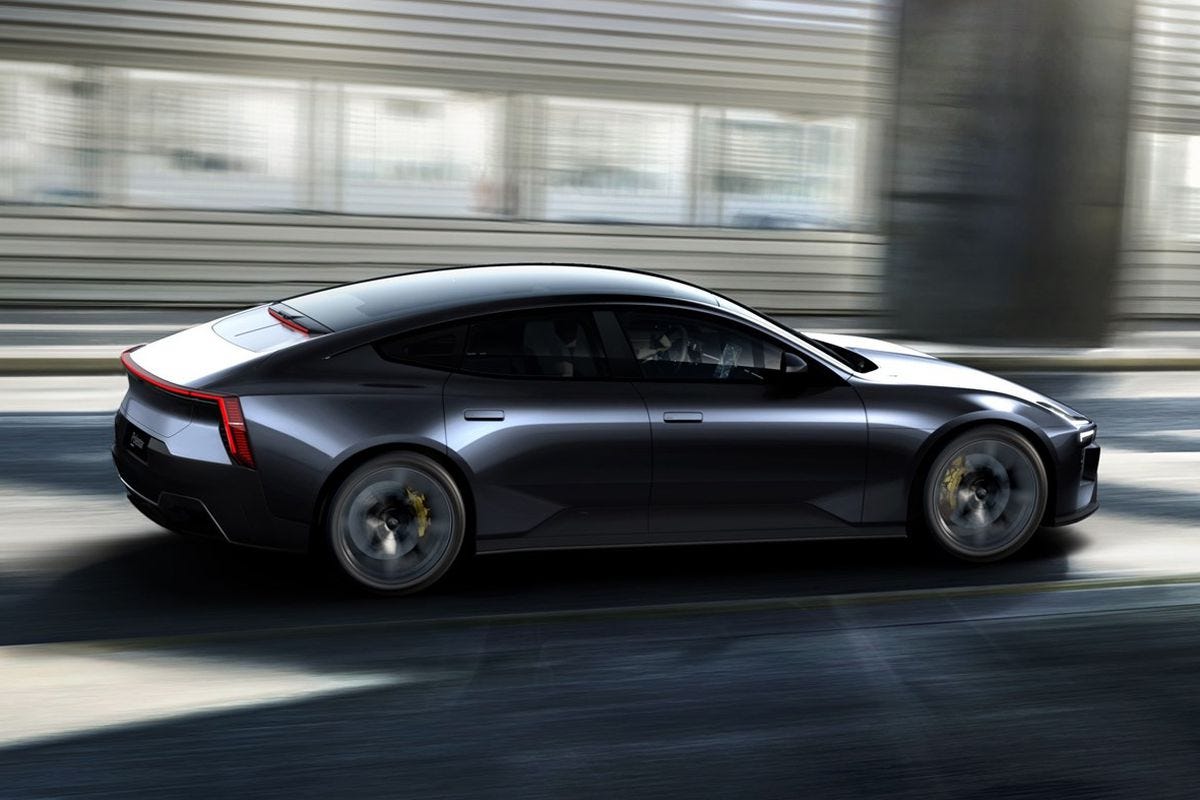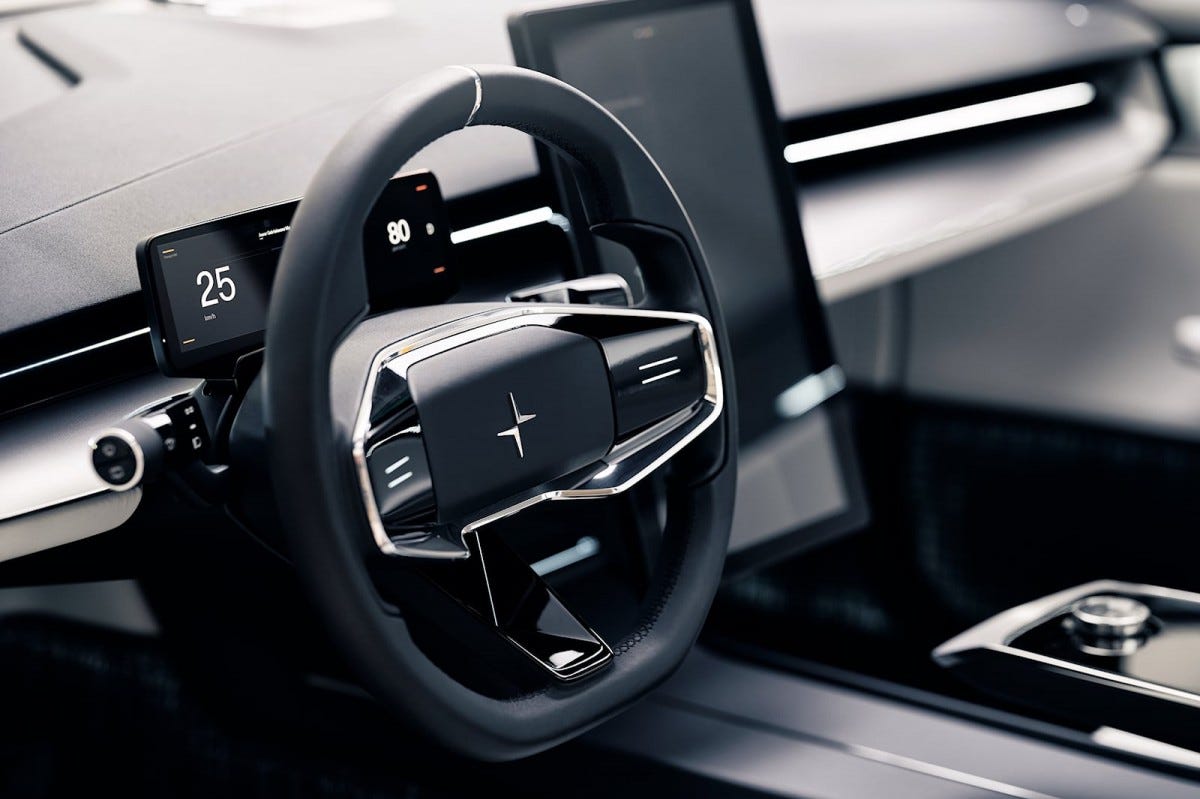Polestar 5 Precept
Hello, electric car lovers! In this article, I cover all the latest tech news surrounding electric cars. I cover the background, feel and drive, the current selling price, and the specs and engineering that go into making each car. If you have an electric car that you’d like me to cover let me know in the comments below. In today's article, I’m reviewing The upcoming Polestar Precept. I’ll be covering the most important features to see whether it stands against the competition or not. Oh, and one more thing before I start - I sold my Chevy electric car, but then I really missed it so I bought it back...I know, pretty revolting!
Okkaayyyy... Now back to the video.
Background
The Polestar Precept is a concept automobile that was created and produced by Volvo's high-performance division for the 2020 model year. The 2020 Precept, which was shown ahead of the 2020 Geneva Motor Show, is Polestar's first concept vehicle since it expanded from its previous role as a sub-brand that customized performance-oriented Volvos.
The Polestar 2020 Precept is also the first Polestar concept to be based on a Volvo, which was introduced in 2015. When contrasted to production models such as the Polestar 1 and Polestar 2, the 2020 Precept represents a "clear statement of intent" and a "preview of the brand's future direction." The 2020 Precept is a "clear expression of intent." Polestar claims that the moniker Precept was chosen "to underscore the car's significance in establishing Polestar's objective as the modern electric performance brand," and that the vehicle would be built in Sweden. Let's find out more about it in the next sections of this review. Polestar Precept is a four-door electric concept automobile developed by Polestar, a joint venture between Volvo Cars and Geely.
On February 25, 2020, the Precept was officially launched. Prior to its postponement as a precautionary measure owing to the Shutdown, the Precept was planned to have its world premiere at the 2020 Geneva Motor Show. Polestar later confirmed that the Precept will be replaced by the Polestar 5 when it goes into production in 2024.
This is the Polestar Precept, a stunning sports sedan concept car with an interior made entirely of durable materials. In competition with the Tesla Model 3, a vehicle that is similar to the Volvo XC40 is being developed. Polish manufacturer Polestar has created a very unique offering with this vehicle, particularly when it comes to driving dynamics.
The Precept serves as a display for Polestar's tangible future in design, technology, and environmental sustainability. Since then, Polestar has verified that the Precept will be built as originally planned. The project is well underway, and work on bringing this ground-breaking electric car to market is progressing at a steady rate, according to the latest updates. Specifically, the company has claimed that it aims to build a whole new production facility in China devoted to the Precept that will be carbon neutral in operation.
"We are looking forward to bringing the Precept to this historic occasion," said Thomas Ingenlath, Polestar's president and chief executive. This is an exciting opportunity to be able to display the automobile to tourists, especially because our British R&D team in Coventry is in charge of the project's development."
Polish automaker Polestar's eye-catching Precept concept vehicle has been granted the all-ahead to go into production, and it will be known as the Polestar 5 when it premieres somewhere in 2024.
The Porsche Taycan, the Tesla Model S, the Lucid Air, and the Mercedes-Benz EQS will all be competing against this futuristic four-door hatchback, which will be released in 2019. Polestar has said virtually nothing about the 5, so I can only speculate that it will be powered by two electric motors, have a competitive driving range, and be made of environmentally friendly materials on the inside. The firm has said that it hopes to construct an entire manufacturing facility in China dedicated to the production of the Polestar 5 in 2023, with the goal of making the new site carbon neutral.
Design and Engineering
While Polestar 1 and 2 are distinctive in their own way, they are significantly inspired by Volvo automobiles. The Polestar 1 is based on the Concept Coupe, which is effectively a two-door variant of the S90, while the Polestar 2 is based on the XC40. With a distinctive design that doesn't share design characteristics with existing production vehicles or Volvo ideas, the Precept Concept breaks this relationship. It is essentially the start of a new era for the Swedish brand. The headlights are definitely based on Volvo's Thor's hammer components, but they've been separated into two pieces.
Even for a concept car, the front fascia is a bit unusual. The centerpiece of the front hood is recessed significantly below the front fenders and the front section, creating a stunning look. The headlights are definitely based on Volvo's Thor's hammer components, but they've been separated into two pieces. There's an upper segment that reaches the upper fender, and a lower section that reaches the corner of the bumper. On top of the LED stripe, there are two tiny lights in the upper part.
There is no front grille on the Precept. Given that the engine is most likely electric, Polestar took advantage of this characteristic and built a narrow space that holds technology for safety sensors and driver assistance functions. In the center of the panel is a transparent section with two radar sensors and a high-definition camera.
There are no side vents on the bumper like there are on ordinary automobiles. The side panels, on the other hand, are scalloped to seem like vents for a sportier aspect.
Finally, a vent can be seen in the lower apron, which is part of a black feature that also contains a splitter that runs the length of the front fascia.
The wheelbase is longer than the Volvo S90 sedan in production.
The Precept has a low and elegant silhouette, especially in the cabin. The Precept is unlike a typical sedan since its roof extends all the way to the back fascia. It's more like a four-door grand tourer, with a 122-inch wheelbase that sounds extremely comfy inside the cabin. In comparison, the Volvo S90 sedan is 6.2 inches longer. This wheelbase is 2.5 inches longer than the Mercedes-Benz S-Class and just 2.6 inches shorter than the extended-wheelbase version of the same car. That's rather remarkable!
Aside from it, the Precept has a contoured profile. With scalloped middle parts and projecting, splitter-style components at the bottom, the side skirts appear to be influenced by current supercars. The broad fender flares support enormous wheels covered in wide tires, and the rear haunches are surprisingly powerful. Side mirrors have been replaced by cameras, and the door handles are flush with the body. The placement of the handles also hints at reverse-hinged rear doors for easier access within the cabin. The roof is fully constructed of glass and stretches from the A-pillar to the rear window's location. Because the Precept lacks a rear window, I suggest it should.
The front pod is a LIDAR device that manages driving assistance activities. Given the muscular shape, the rear fascia is surprisingly basic. Lighting is provided by a large blade that runs the length of the automobile and expands into vertical wings at the bumper's corners. It wraps over the fascia's borders, giving the back end a boxy appearance. The lack of a back window, which has been replaced with a sculpted panel that continues into the glass top, is also noticeable. High-mounted hinges are used in this design, resulting in a bigger tailgate opening.
A dynamic bumper with a race-inspired diffuser and exhaust pipes on the sides can be seen below. However, none of these elements are present, and the diffuser part is blocked off at the bottom by a splitter. Needless to say, the back end is really amazing and reminds me of 1970s sports cars.
Interior
Like in full-fledged sports vehicles, the seats have significant side bolstering and integrated headrests.
The Precept, like other current concept automobiles, has a very minimal and clean cabin. On the dashboard and door panels, there are no buttons, sharp angles, or switches. The dashboard is unexpectedly narrow, with lots of knee space beneath and an almost flat top part. The central section is pulled inwards and features large A/C vents. Through screens that show pictures from the outside cameras, the dashboard corners "flow" into the door panels. The steering wheel is likewise as basic as they get, with fewer buttons than previous models.
The instrument cluster is a tiny screen mounted to the dashboard, but the infotainment display is considerably bigger and has a portrait-style layout, similar to that found in some Volvo and Tesla vehicles. The door panels follow the dashboard's minimalist design, with only an armrest in the center and barely discernible trim. The seats, on the other hand, have thick side bolstering and integrated headrests, similar to those seen in full-fledged sports vehicles. Instead of the more usual three-passenger bench, the rear part has a two-seat arrangement.
Despite the coupe-like design of the roof, there appears to be enough legroom and headroom. Natural light floods the interior through the glass panel that reaches all the way to the rear headrests. The seat surfaces are made of recycled plastic bottles that have been 3D knitted.
Despite its upscale appearance, the Precept's cabin lacks the normal leather and wood veneer found in luxury vehicles. Starting with the flax-based composites on the door panels and seat backs, the interior was built using a wide range of sustainable materials. These are 50% lighter than regular plastic, and they also minimize trash by 80%. The seat surfaces are 3D-knitted from recycled plastic bottles, with recycled cork vinyl bolsters and headrests. Reclaimed fishing nets are used to make the rugs.
This is an intriguing approach in which luxury transcends the norms of leather, wood, and chrome, but with so many German premium automobiles equipped with these classic materials, it remains to be seen if buyers would embrace the concept.
In terms of technology, the 15-inch display is equipped with an Android-based next-generation system. This infotainment system, which was developed in collaboration with Google, would most likely appear in production cars next year. There's also an illuminated blade across the dashboard, and a holographic Polestar insignia floats between the rear-seat headrests on the crystal headrests.
The dashboard, like the front grille, has a slew of sophisticated sensors. Eye tracking tracks the driver's gaze and modifies the content of the panels appropriately, while proximity sensors improve the center display's usefulness while driving.
Performance
The Polestar 2's motors produce a total of 304 KW and are powered by a 78-kWh battery pack.
Polestar didn't disclose anything about the drivetrain but did note that the large wheelbase is crammed with batteries. I know the Precept is all-electric since there are no exhaust pipes. But, beyond the battery pack, what lies behind the shell?
This concept of the automobile, on the other hand, might not have a motor yet. It's understandable if not all notions are completely functioning. Polestar might perhaps be working on a next-generation electric motor and didn't have time to finish the concept car project.
Polestar currently has an electric drivetrain, so I'm not sure when this concept car will move into production. It's available in the Polestar 2, which debuted with two electric motors at the 2019 Geneva Motor Show.
The motors produce a total of 304 KW and are powered by a 78-kWh battery pack. This is enough to propel the Polestar 2 from zero to sixty miles per hour in under five seconds. Needless to say, this drivetrain is more than adequate for the Precept, albeit considering the available alternatives, a little more power would be preferable. The Precept, based on its design, would be a rival to the Porsche Taycan and the Tesla Model S, both of which have amazingly capable drivetrains in range-topping form. But, for the time being, the Precept is focused on a new design language and technology, rather than mechanics.
Battery Life
The Polestar 5's 103.0-kWh battery is projected to give more than 300 miles of driving range per charge. Furthermore, both the Model S and the Air presently offer variants with ranges exceeding 400 miles, so Polestar would be good to aim for that bogey. All of the latest charging techniques, including Level 2 home charging and DC fast charging for public stations, are anticipated to be available.
Price and model range
Polestar's standard warranty coverage may change between now and 2023, but as of this review, the company offers a rather basic warranty plan that is comparable to Tesla's. Despite the fact that Polestar is a Volvo subsidiary, Volvo does not offer free scheduled maintenance. A limited warranty of four years or 80,000 kilometers is available. Electrical components are insured for eight years or 1,60,000 kilometers. The bundle does not include any maintenance.
There has been no indication on the pricing or when the Polestar Precept will be available for purchase. It is obvious that a new factory will be constructed for it. As a result, production will not begin this year.
When it finally hits the market, the 5 will be an all-new model for the nascent Polestar company, based on the magnificent Precept idea. Polestar hasn't provided many specifics about the launch date, although it has stated that the 5 would be available in 2024. Electric powertrains and high-end interiors are not inexpensive. When you combine the two, you're looking at a beginning price in the six-figure range.
The base trim estimation price is $100,000
This wraps up my review of The Polestar Precept, let me know what you think of it. Thank you for sticking it out through to the very end of this article! Nothing helps out my blog more than y’all reading the entire article. These articles take a long time to make and are a labor of love. If you would like to see my blog grow, please help spread the word and until next time, remember, the best experiences aren’t about where you end up, but who you’re lucky enough to be on the journey with.



